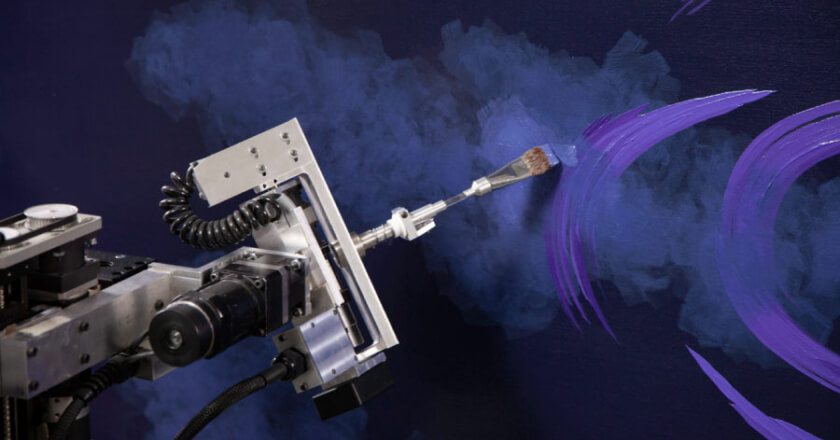Get Inspired
Build the life you love. Learn more about fusioneering:

Posted on July 12, 2023 in Critical Thinking Skills
For humans, problems are universal and inevitable. They come in various shapes and sizes, testing our resilience and creativity. While the word “problem” may carry negative connotations, it’s helpful to remember that every problem is an opportunity in disguise – a chance for growth, iteration, innovation, and discovery. Challenges and problems are what led modern inventor Paul Kirby down his path to refine his incredible painting robot, Dulcinea. Unforeseen circumstances and the need to adapt have also spurred the genius of famous innovators like Leonardo da Vinci, Ben Franklin, Georges Méliès, and countless others.
Maybe a problem can be a blessing in disguise for you, too – you just need to know how to tackle it. In this blog, you’ll discover what “first principles” are and how to use them to become a better problem solver.
Related: 4 Practices for Better Critical Thinking
At the core of effective problem-solving lies the ability to break down complex issues into their fundamental components. This approach is known as “first principles.” Instead of relying on existing assumptions, beliefs, or established solutions, first principles thinking encourages you to start from the very basics and build your understanding from there. By starting from the simple foundation of an issue, rather than relying on existing solutions or assumptions, first principles thinking encourages creativity, innovation, and the discovery of new solutions. Through testing, refinement, and continuous iteration, first principles thinking can lead to breakthrough insights and optimal problem-solving outcomes.
Ready to put the first principles approach to the test? Here’s a step-by-step guide!
Traditional means of problem-solving typically begin with considering the limitations of a situation and exploring existing solutions that can be applied. Many problems are approached with preconceived notions or existing beliefs, which can limit our thinking and hinder creative solutions. First principles thinking asks us to throw all of that out in service of finding a better solution for the problem at hand.
Large and complex problems can often seem overwhelming, leading to analysis paralysis. First, break down the problem into its fundamental elements or principles. Find the most basic truths about what you’re approaching. Ask yourself what cannot be broken down any further, what is essential to the problem, and what needs to be addressed to find a solution. Clarify the purpose of what you’re doing. By understanding the core principles at play in an issue, you gain a deeper insight into the problem’s nature and its fundamental drivers.
The next step is to identify and challenge any assumptions or preconceived notions you may have about a given problem. By questioning what is commonly accepted, you create space for innovative thinking and alternative perspectives. If this seems difficult, consider how a child might approach questioning a conundrum. Children may ask “why” ad nauseam, but their doing so drives them to see the core of an issue.
Looking to challenge the basic assumptions of your own life? Learn how to fusioneer your passion.
Once you know what you’re working with, the next task is researching and gathering information about the fundamental principles you have identified. Look for scientific facts or proven theories that form the foundation of the problem. This step helps you build a strong understanding of the underlying truths involved in a given task and informs your subsequent decision-making process.
Once you have a solid grasp of the foundational principles, reconstruct your understanding of the problem from the ground up. Rather than relying on existing solutions or conventional wisdom, you can now build your own bespoke solution or approach based on your heightened understanding of the problem at a base level. This reconstruction process allows you to think creatively, challenging the status quo and exploring new possibilities.
One of the key advantages of first principles thinking is the freedom it provides to embrace creativity and innovation. By breaking away from existing solutions, you are encouraged to think outside the box and consider unconventional approaches. This mindset opens up possibilities that may have been overlooked before, enabling you to discover innovative solutions and insights.
Related: 5 Ways to Be More Creative
It’s important to understand that first principles thinking does not end with ideation. It is crucial to test, refine, and continually iterate on your solutions to reach an optimal outcome. Don’t be afraid of hiccups along the way – failure is an integral part of the problem-solving journey. It is through our failures that we learn, grow, and refine our approaches. Each setback brings us closer to success, as we gain valuable knowledge and insights along the way. By remaining open to change, we can continuously improve our solutions and generate lasting impact.
Want to see the process in action? There’s no better way than to watch Paul Kirby applying first principles analysis to the task of building a robot capable of painting. Catch this and more in the short documentary film, Brushstroke.
For more from The Kirby Foundation, make sure to get involved with Instagram, Facebook, Pinterest, and our mailing list. Happy innovating!
Are you interested in hearing the complete story of Paul and Dulcinea? Watch the video (nominated for Best Short Film at the 2021 Vail and Portland Film Festivals) for more info.
Want to be the first to know about every exciting new project at the Kirby Foundation?
Join Our Mailing ListBuild the life you love. Learn more about fusioneering:
Why pick which passion you should follow? Fusioneering allows you to cultivate many interests into something innovative and revolutionary.

Meet Paul and explore how blending your interests can empower you to follow your enthusiasm and bring your passions to life.